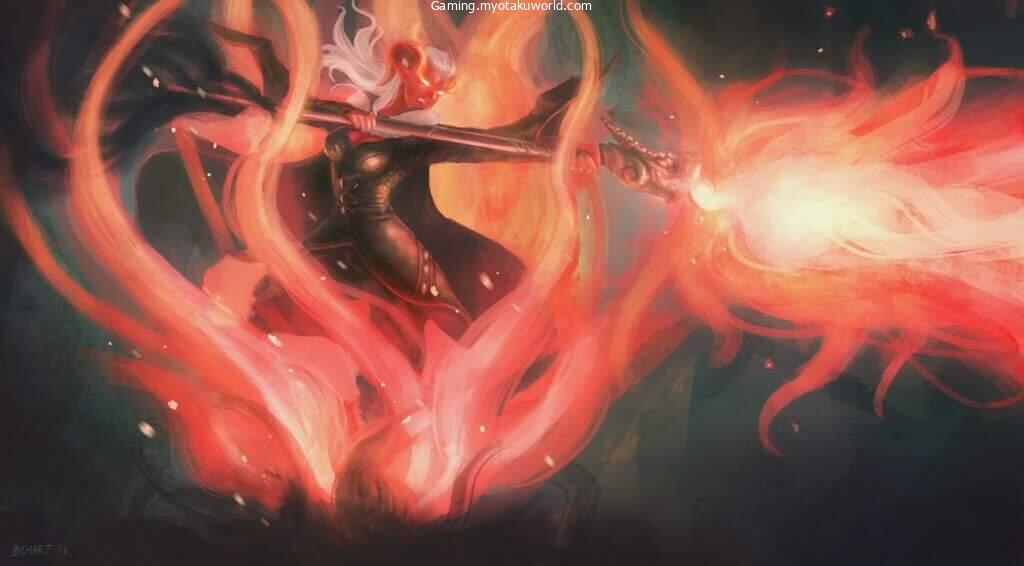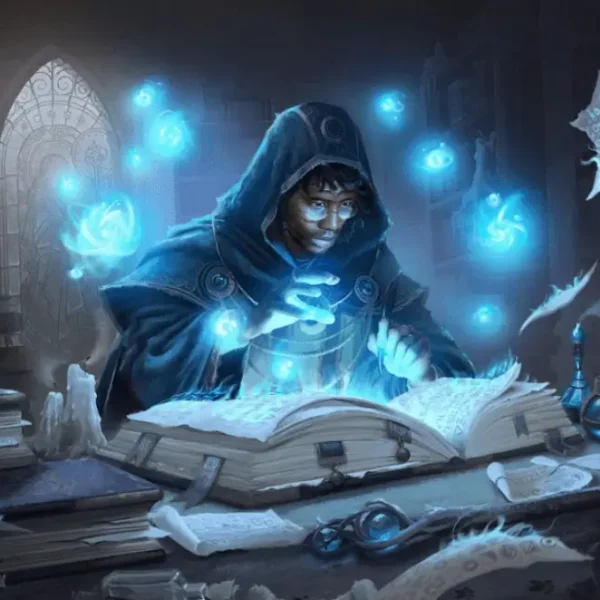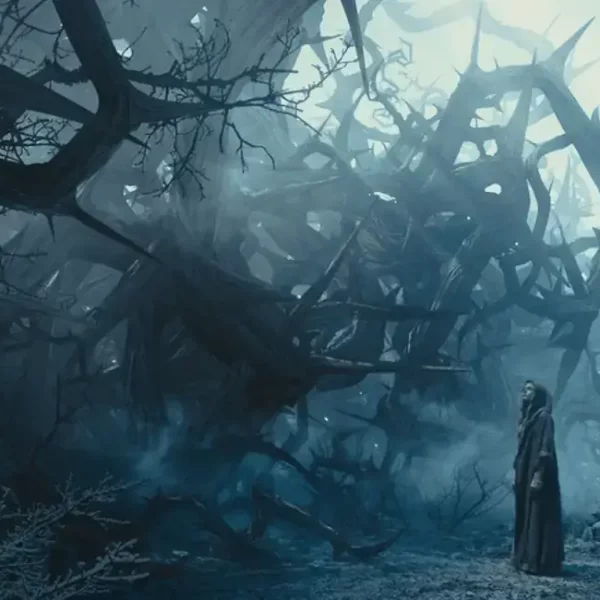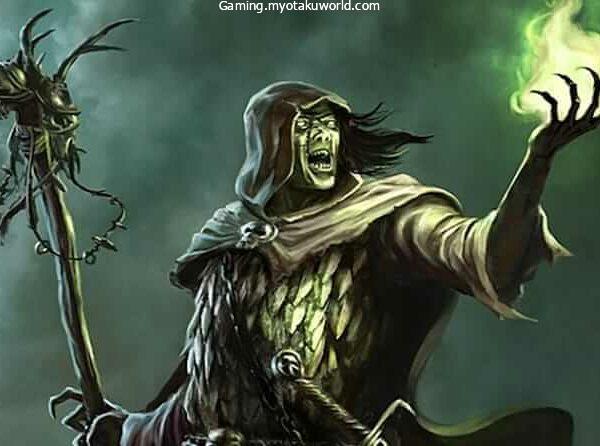As my character walks through the slums of Waterdeep, he notices a drunken man stumbling and mumbling. The man then proceeds to relieve himself on the corner of a nearby restaurant.
Beside thee, a diminutive tiefling, a being born of both human and demon blood, doth sift through the refuse in search of sustenance cast aside by the eatery.
My human character grunts triumphantly and relieves himself on the defeated demoness, a wicked grin on his face. The halfling is taken aback and drops to the ground, scrambling to regain their footing before rising up in frustration.
My character observes the girl’s defiance with a grin and strides towards her. “Thou art but a mere creature,” he declares as the symbol of the Holy Hand of Helm glimmers on his jacket’s lapel.
As my character, I am aware of the organization’s xenophobic tendencies, so I attempt to flee.
Unfortunately, I am apprehended by the man who grabs me by the shoulder and pins me against the wall, choking me. I, a brave adventurer, doth declare that thou art not welcome in this fair city, foul creature.
As my character’s health wanes, she musters the strength to aim her finger at the twisted grin of the humanoid foe and utters, “Beings such as myself have no sanctuary… but thou shalt find thyself in the depths of hell.”
As you walk through the bustling streets of Waterdeep, you suddenly hear a commotion coming from a nearby alley. You quickly make your way over to investigate and are met with the sight of a humanoid figure engulfed in flames as it runs past you.
My character sheds tears and lets out a piercing scream as he succumbs to a loss of bodily autonomy, collapsing onto the ground in an unconscious state.
I witness as the enemy’s flesh melts away, and their bones are consumed by the fiery inferno. I spot a demon girl sprinting away from me, clutching a loaf of bread tightly to her chest.
Hail and well met, fellow adventurer! Behold, I present to thee a guide on the art of Hellish Rebuke in the realm of Dungeons and Dragons 5th edition.
What is Hellish Rebuke Spell?
From the Basic Rules, this spell says, “You point your finger, and the creature that hurt you is briefly surrounded by hellish flames.”
The thing must try to save itself with a Dexterity roll. If the save isn’t made, it does 2d10 fire damage. If the save is made, it does half as much damage.
When you use a spell slot of level 2 or higher to cast this spell, the damage goes up by 1d10 for every slot level above 1st.”
Hellish Rebuke 5e Stats
| Level | 1 |
| Casting Time | 1 Reaction |
| Range/Area | 60 ft |
| Classes | Warlock, Paladin* |
| Components | Verbal, Somatic |
| Duration | Instantaneous |
| School | Evocation |
| Attack/Save | Dexterity |
| Damage/Effect | Fire |
How does Hellish Rebuke work?
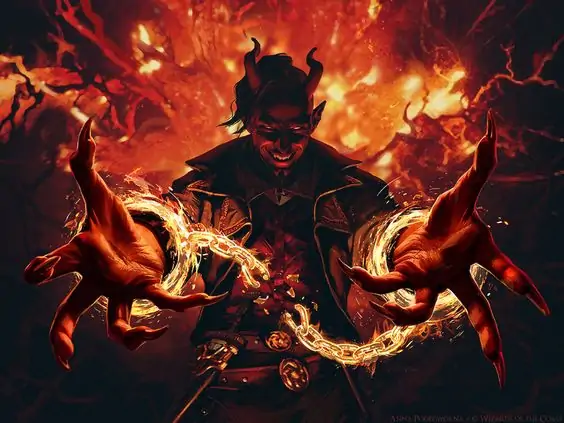
“Hellish Rebuke” is an evocation spell of the first level that can be found on page 250 of the PHB (Player’s Handbook).
It takes one reaction to cast (which you do when you take damage from a monster you can see within 60 feet of you), has a range of 60 feet, and lasts for an instant. There are two parts: verbal and physical. Here’s what happens as a result:
“You point your finger at the creature that hurt you, and for a moment, hellish flames circle it. The thing must try to save itself with a Dexterity roll. If the save isn’t made, it does 2d10 fire damage. If the save is made, it does half as much damage.
When You Get Higher. When you use a spell slot of level 2 or higher to cast this spell, the damage goes up by 1d10 for every slot level above 1st.”
Is Hellish Rebuke a Good Spell?
Hellish Rebuke might be fun at lower levels if you have nothing else to do with your reaction, but there are much better ways to use it.
At higher levels, you won’t want to use your reaction on a spell that doesn’t scale well and does fire damage, which is the type of elemental damage that is most often blocked.
Even if Hellish Rebuke was a spell that Wizards or Sorcerers could use, that would still be true. The fact that it is a Warlock spell makes it an even worse choice.
No matter how high your level is, Warlocks only have a small number of Pact Magic slots. They need to save these spaces for spells that do a lot of damage or help others.
The only Warlock who could use this spell is a Hexblade, because you fight a lot in close quarters. Even so, you shouldn’t keep Hellish Rebuke after 5th level.
Breaking Down the Spell’s Characteristics
At the start of the game, a 1st level skill is a useful tool. In general, spellcasters with low levels have few spell slots, so any result must be important for it to happen.
Still, as the game goes on, these spell spots become more expendable, so spells need to be useful in a wide range of situations or scale well, like cantrips.
The school of conjuring is all about energy bursts. This meaning fits “momentarily surrounded by hellish flames” perfectly, so there’s not much to talk about here.
For the spell to work, it needs your help. There are some important things to think about because of this.
- All responses in the game need a trigger, and this one is very specific: “1 reaction, which you take when you take damage from a creature you can see within 60 feet of you.” You must have been hurt by the enemy, and you must be able to see who hurt you. So, if the enemy’s attack fails, you can’t cast it because you are blinded, resistant to damage, or just shrug it off in some way.
- During battle, reactions are a type of resource that you can use to cast spells when it’s not your turn. This is the spell’s main draw. By default, you can only use this resource in “Opportunity Attacks,” which are rare and not very good for most spellcasters. As a safety measure, having a big burst spell is a good idea.
- You can also cast reactions when it’s your turn. If the enemy attacked you during your turn, you could cast the spell while you do your normal activities.
The 60-foot range is about normal. Most of the time, you’ll want to cast this spell at a close enemy in order to get rid of it. But a 60-foot range will almost certainly cover the whole of any indoor spot, which is where most fights take place. Watch out for shooters, you. You can’t pay back an arrow shot 300 feet away.
The immediate length of this spell is clear. It’s just a quick way to get back at him.
The two-part rule is pretty normal, so to cast the spell, you need to be able to talk and move your hands. If you are being attacked and have a sword and shield, you can’t cast it.
If you’re inside a “Silence” spell, you can’t cast it. You might not be able to cast this spell in a lot of cases unless you have something to make up for this, like the Subtle Spell Metamagic from sorcerers or the War Caster Feat.
Breaking Down the Spell’s Effect
The spell is easy enough to understand that anyone can do it right. But there are some things that aren’t clear that you need to think about, especially if you’re a DM deciding on rules:
Most of the first line is flavor. Still, it says “the creature that hurt you,” so if you get hurt, you can’t use this spell against another creature. You must have been hit by it.
“Dexterity Saving Throw” for damage reduction of half: Because these are very regular saves, most creatures have a good chance of making them.
Even if they do succeed, they will almost certainly do some damage. Another good thing about Dex Saves is that they are obvious, so you can usually tell if a creature has a low chance of succeeding or a high chance of succeeding. It’s much easier to hit a big, swollen, rubbery cube than a small quickling.
Most of the damage is pretty high for a 1st level power. You can compare it to spells like “Inflict Wounds,” which does 3d10 damage to a single target, or to “smites,” which only do 1d6 damage when they hit. Even though each power does something different, it’s amazing how much damage they can do.
Fire is the damage type of the spell, and fire damage is the second most difficult to fight in the game. This means that the enemy is likely to take less or no damage from the spell. So, keep in mind when your DM tells you where the campaign will be that the resistances of monsters depend a lot on the campaign.
Higher levels: Up-casting a spell is a great way to keep it useful throughout the game, and spells that deal damage are better when they have bigger dice. With Hellish Rebuke, they get an extra d10 for every level of their spell slot. This is better than almost all magic, and Warlocks can do even more with it, but we’ll talk about that later.
Lastly, the spell leaves out a lot of information, which makes it hard to know what it means when the case comes up.
I’ll give you some ideas, but every table is different, so it’s important to talk with your group and DM:
- The spell doesn’t say where the flames come from or whether they burn things that can catch fire. Keep this in mind when you have a creature over an oil puddle. As written, the rules say it won’t light, but it’s up to you.
- The spell says, “You point a finger,” but it doesn’t say “towards the creature,” so you could make someone think the magic is coming from somewhere else. Most of it is taste, but it is there.
- If you get hit during your turn, there’s nothing stopping you from moving toward the creature that hit you and then taking the response. For example, if you are influenced by a spell that hurts you when your turn starts and the person who cast the spell is 70 feet away, you could move and still use the spell.
Who Can Get Fiery Revenge?

Hellish Rebuke is a 1st level spell for Warlocks that can be found in the PHB on page 276. In this way, the spell has a lot of limits. But ANY 4th-level character with the “Magic Initiate” feat can get it.
Also, at level 10, Bards can learn it through magical secrets, and Oathbreaker Paladins can add it to their list of spells. Also, a Tiefling’s base can be used once a day.
If you are a dungeon master, ANY Warlock NPC you want to add to your game could use this spell. If you need ideas, the Firenewt Warlock of Imix, the Yuan-ti Pit Master, and the Warlock of the Fiend all have this spell in their list of spells. This spell is related to the thought of a Warlock, as you can see.
Who is the Best for this Spell?
This spell is for warlocks, if that wasn’t already clear. It’s not just a connection in terms of themes. Warlock’s Pact Magic helps the spell out a lot.
The fact that the spell up casts so well and is a simple burst response goes well with the way Warlocks get more spell slots and get more spell slots back after a short rest.
A Sorcerer with the Warlock spell Magic Initiate might be able to boost a Hellish Rebuke, but it would only do a small amount of damage for a whole feat.
On the other hand, a fifth-level Warlock has two 3rd-level spell slots. A Hellish Rebuke deals 4d10 damage and restores these spell slots after a short rest.
Which Classes Can Use Hellish Rebuke?
Hellish Rebuke is a spell for Warlocks. Oathbreaker Paladins are always ready for it.
FAQs
Can you use Hellish Rebuke if the damage taken drops you to zero HP?
No, would be the short answer. But the “rule of cool” might think differently. The way the rules are written, if you drop to 0 HP first, you pass out and can’t do anything. Still, after the trigger is met, responses happen in a fraction of a second. “Dropping to 0 HP” and the responses that happen at the same time could be seen as an epic moment.
DOES HELLISH REBUKE IGNITE FLAMMABLE OBJECTS?
No. The description of the spell doesn’t say what happens to things other than the subject when they touch the flame. So, according to the rules, only the target is hurt. They don’t set fire to anything they carry or wear, but the DM can decide otherwise.
IS HELLISH REBUKE AN “EVIL” SPELL?
It’s basically the same as any other skill in the game. It’s only bad if it’s used for bad things or by bad animals. Even though “hell” is in their name, their power doesn’t have to come from the lower planes.
